Fernandina Island: The Galapagos’ Living Volcano & Its Real-Life Dragons
Fernandina Island, the youngest and most pristine jewel of the Galapagos archipelago, is a living testament to nature’s raw power. Here, lava fields stretch like shattered glass, marine iguanas crawl like dragons from a fantasy novel, and volcanic eruptions reshape the land in real time. This guide will take you through Fernandina’s volcanic wonders, unique wildlife, and the challenges of preserving its untouched ecosystems. Whether you’re a thrill-seeker or a nature lover, prepare to be captivated by an island where evolution feels tangible.
Fernandina Fast Facts
- Youthful Fury: At just 500,000 years old, Fernandina is the youngest Galapagos island, still growing via eruptions from La Cumbre, one of Earth’s most active volcanoes.
- Zero Invasives: The only island in the archipelago with no invasive species—even a single foreign seed could disrupt its delicate balance.
- Espinosa Point: The sole landing site, a narrow lava strip teeming with marine iguanas, flightless cormorants, and sunbathing sea lions.
- Exclusive Access: Only 12 cruise ships and 1,000 visitors are permitted yearly—true exclusivity in the wild.
- UNESCO Protected: A World Heritage Site since 1978, with 97% of the island off-limits to all but researchers and licensed guides.
Fernandina Activity Highlights
- Hike the rim of an active volcano (La Cumbre).
- Snorkel alongside marine iguanas feeding underwater.
- Kayak through Elizabeth Bay’s mangrove forests.
- Dive the nutrient-rich Cromwell Current.
- Photograph lava cactus blooms at sunrise.
- Spot Galapagos penguins darting through tidal pools.
Fernandina Animal Highlights
- Marine Iguanas (Amblyrhynchus cristatus): The only seafaring lizards on Earth.
- Flightless Cormorants (Phalacrocorax harrisi): Birds that traded wings for expert diving skills.
- Galapagos Penguins (Spheniscus mendiculus): The rarest penguins, adapted to equatorial life.
- Galapagos Sea Lions (Zalophus wollebaeki): Curious pups that snorkel alongside visitors.
- Sally Lightfoot Crabs (Grapsus grapsus): Neon-red crabs dancing across black lava rocks.
- Galapagos Hawks (Buteo galapagoensis): Apex predators with talons sharp enough to snatch iguanas.
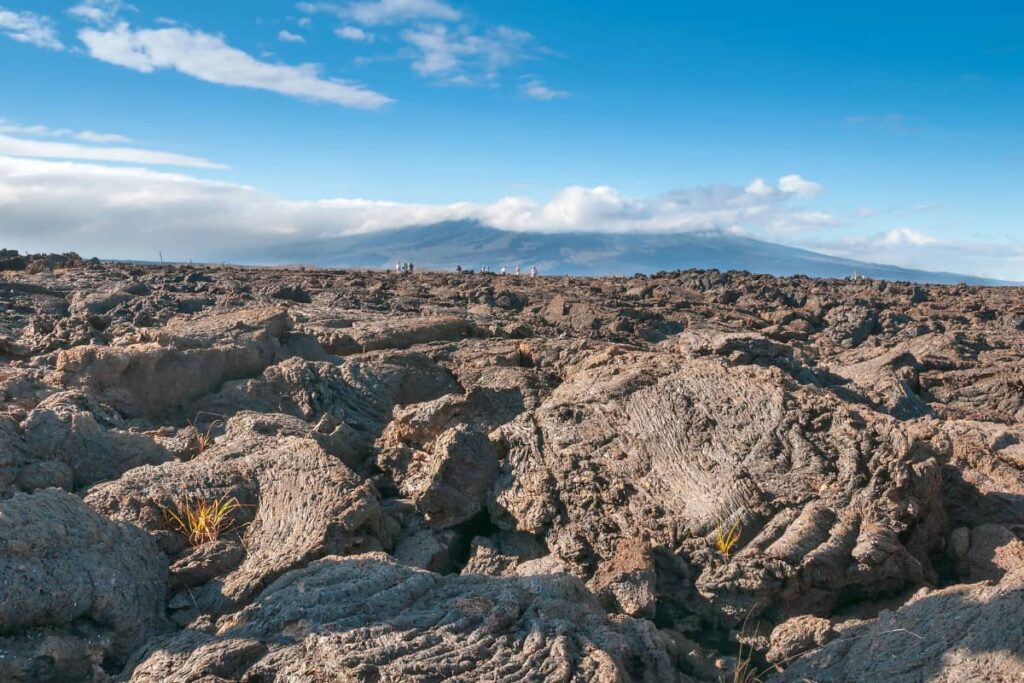
History
1. Volcanic Birth
Fernandina emerged from the Pacific Ocean roughly 500,000 years ago, forged by the Galapagos hotspot—a molten plume beneath the Nazca Plate. Its most recent eruption (January 2020) spewed ash 8 km into the sky, reminding us that this island is still under construction.
2. Human Footprints
Named in 1825 after King Ferdinand VII of Spain, Fernandina’s lack of freshwater deterred settlers. Pirates and whalers briefly hunted sperm whales and fur seals here in the 1800s, but strict conservation laws enacted in 1959 erased nearly all human traces.
3. Darwin’s Living Laboratory
Charles Darwin never set foot on Fernandina, but its wildlife—particularly the marine iguana—inspired his theories. Today, scientists study the island’s rapid evolutionary adaptations, like cormorants losing flight capability in just 2 million years.
4. UNESCO Recognition
In 1978, Fernandina became a cornerstone of the Galapagos’ UNESCO World Heritage Site designation, celebrated for its “outstanding natural beauty” and role in understanding volcanic processes.
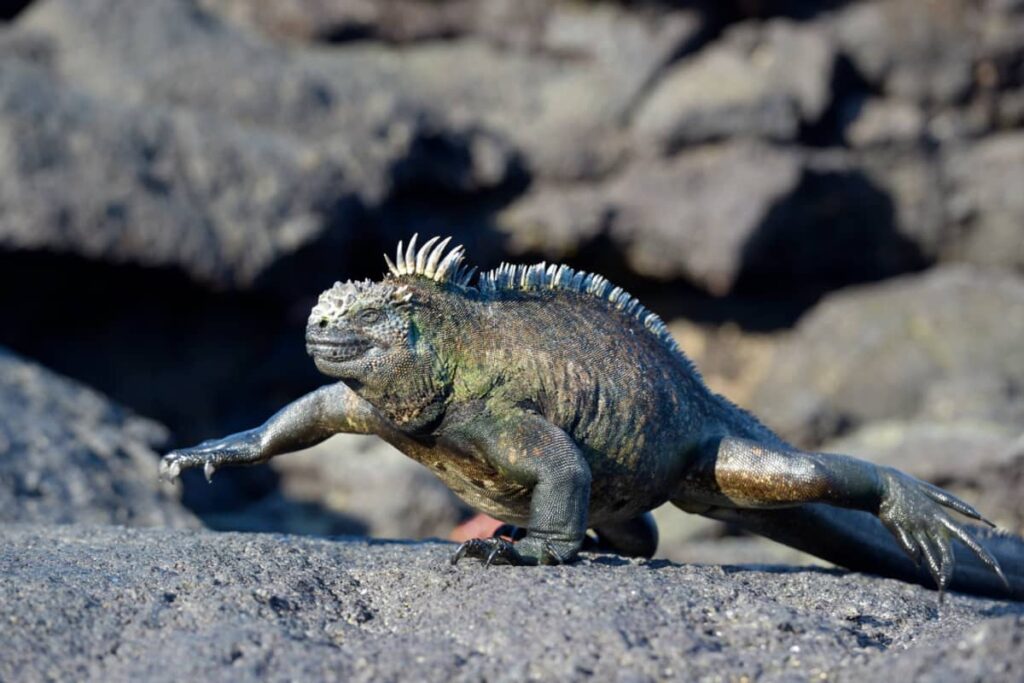
Geography
- Area: 642 km² (248 sq mi)—the third-largest Galapagos island.
- Elevation: La Cumbre volcano towers 1,476 meters (4,842 ft) above sea level.
- Unique Features: A 6.5 km-wide volcanic caldera, 200 km² of unbroken pahoehoe lava flows, and saltwater lagoons fringed by red mangroves.
Getting to Fernandina Island
Fernandina is accessible only by boat due to strict conservation rules. Most visitors arrive via:
- Multi-Day Cruises: Depart from Santa Cruz (Baltra Airport) or Isabela Island. Trips last 7–14 days, with stops at Fernandina and neighboring islands. Private charters are also an option.
- Arriving from Mainland Ecuador: Fly to Quito or Guayaquil, then to Baltra (GPS) or San Cristóbal (SCY) airports. From there, connect to cruises.
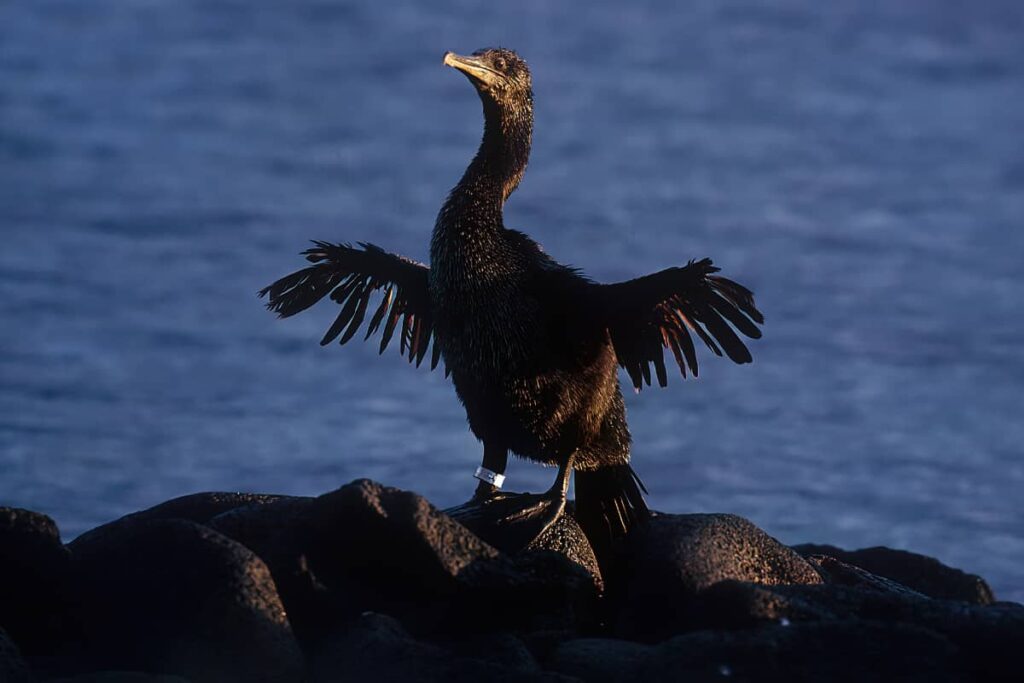
Conservation Challenges on Fernandina Island
1. Invasive Species Defense
Fernandina remains the only Galapagos island without introduced mammals like rats or cats, a rarity in the archipelago. Ships must anchor offshore and the sole visitor site, Punta Espinosa, is rigorously monitored. However, historical threats persist—illegal fishing camps in the 1990s during the sea cucumber boom risked introducing invasive species, and periodic checks remain critical to prevent future breaches.
2. Climate Change Impacts
Rising ocean temperatures and intensified El Niño events disrupt marine ecosystems. During El Niño, warm waters reduce nutrient upwelling from the Cromwell Current, causing algal die-offs that starve marine iguanas and penguins. Marine iguanas face additional risks: warmer sands skew egg sex ratios (higher temperatures produce more females), while coastal erosion from rising seas threatens nesting sites.
3. Volcanic Activity
La Cumbre Volcano’s frequent eruptions reshape habitats. The 1968 eruption collapsed its caldera by 350 meters, altering landscapes and temporarily displacing wildlife. While no subspecies extinctions are documented, eruptions destroy vegetation critical for land iguanas (Conolophus subcristatus) and disrupt nesting zones for flightless cormorants. Volcanic ash and lava flows also smother marine habitats, though species like the lava cactus (Brachycereus nesioticus) quickly recolonize fresh lava.
4. Tourism Pressures
Despite Fernandina’s limited access (only around 1,000 annual visitors), foot traffic at Punta Espinosa erodes fragile lava soils. The Galapagos National Park enforces strict group rotations and a 16-meter wildlife buffer. Tourism growth archipelago-wide increases pressure for expanded access, risking habitat fragmentation.
5. Overfishing and Pollution
While Fernandina’s waters are protected, illegal fishing fleets near the Galapagos Marine Reserve target sharks and tuna, depleting food sources for seabirds and penguins. Plastic pollution from global currents inundates Fernandina’s shores—8+ tons are removed yearly from the islands, threatening species like marine iguanas (38 Galapagos species ingest or can become entangled in plastic).

Economy
Fernandina Island has no permanent inhabitants and thus no local economy. However, the wider Galápagos economy—fueled by neighboring islands—relies on three pillars:
- Ecotourism
Tourism generates 65–80% of the archipelago’s GDP, with most visitors paying a $200 entry fee (doubled in 2025. Click here for more information about the new entry fees) to fund conservation. Over 33% of residents work in tourism, though foreign-owned cruise lines capture ~70% of profits. - Sustainable Fishing
Cooperatives like Pescado Azul harvest spiny lobsters (Panulirus penicillatus) under strict quotas, but illegal shark finning persists in the Marine Reserve. Fishing employs ~10% of islanders, though many transition to tourism for higher wages. - Scientific Research
The Charles Darwin Foundation and Galápagos Science Center lead studies on endemic species, supported by grants. Partnerships with organizations like Yale University encourage new ways of sustaining the islands. .
Climate
Dry Season (June–November)
Cooler temperatures (18–24°C/64–75°F) and frequent mist (garúa) make this ideal for hiking La Cumbre. Wildlife is highly active, though seas are rougher.
Wet Season (December–May)
Warmer (24–30°C/75–86°F) with sporadic rain. Calm seas are perfect for snorkeling and diving, but volcanic trails can be slippery.

How to Visit Fernandina Island
Option 1: Scheduled Cruises
Best For: Luxury seekers, photographers, and those prioritizing comfort.
Pros:
- Expert Guides: Naturalists provide in-depth insights into Fernandina’s volcanic landscapes and unique wildlife, such as marine iguanas and flightless cormorants.
- All-Inclusive Amenities: Meals, accommodations, and activities (e.g., snorkeling, volcano hikes) are bundled, often with luxury perks like onboard spas or photography workshops.
- Guaranteed Access: Western itinerary cruises (e.g., National Geographic Endeavour II) include Fernandina, bypassing permit hassles.
Cons:
- High Cost: Prices range from 5,000–15,000+ for 7–14-day trips. (Luckily, you can save money by booking a last-minute cruise!)
- Fixed Itineraries: Most Galapagos cruises skip Fernandina; confirm "western islands" itineraries to avoid disappointment.
Option 2: Private Charters
Best For: Exclusive groups, customized itineraries, or special events.
Pros:
- Tailored Experiences: Design your own schedule (e.g., volcano hikes, private snorkeling sessions, extended downtime).
- Privacy: Avoid crowds; ideal for photographers or researchers needing uninterrupted access.
Cons:
- High Cost: Prices typically start much higher than a scheduled cruise for a 7-day charter, excluding permits and crew fees.
- Permit Complexity: Requires advance approval from Galapagos National Park (6+ months).
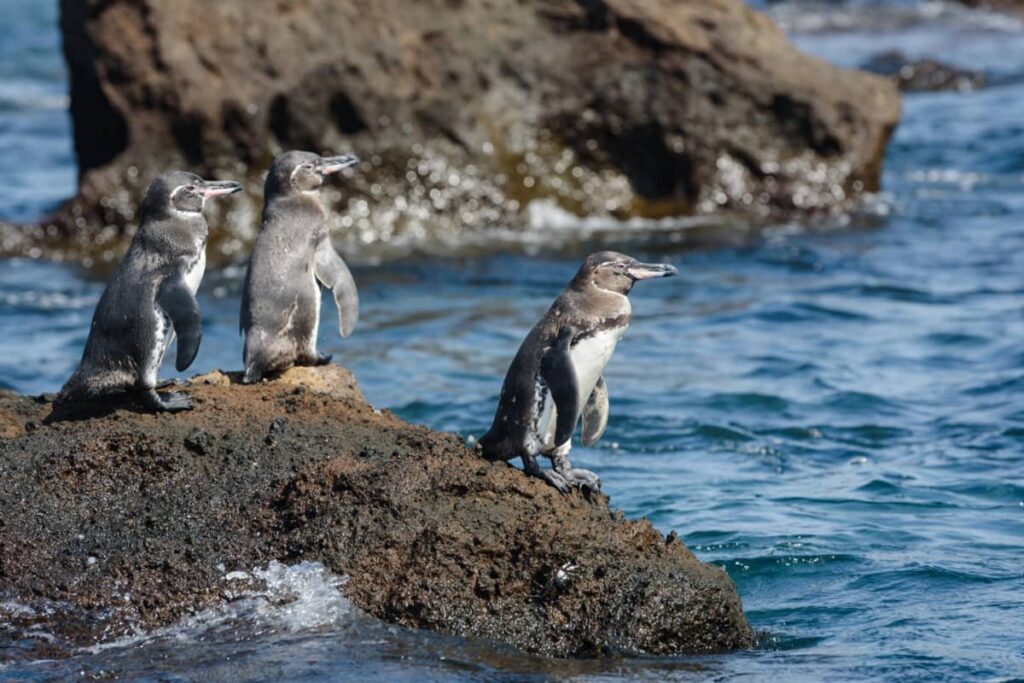
Activities & Experiences
1. Summit La Cumbre Volcano
Trek 12 km across jagged lava fields to peer into an active caldera. Guides provide masks for sulfur fumes. Best at sunrise for cooler temps and ethereal fog.
2. Snorkel with Marine Iguanas
At Punta Espinosa, float alongside these prehistoric reptiles as they dive 15 meters to graze algae. Their salt-encrusted snouts and algae-stained teeth are oddly endearing.
3. Kayak Elizabeth Bay’s Mangroves
Paddle through emerald lagoons where Galapagos penguins dart like torpedoes and golden rays glide beneath your kayak. Listen for blue-footed boobies plunging nearby.
4. Dive the Cromwell Current
Advanced divers explore this nutrient-rich upwelling, where scalloped hammerhead sharks school by the hundreds and manta rays somersault through the blue.
5. Photograph Lava Cactus Blooms
Capture the stark beauty of Brachycereus nesioticus cacti blooming in January. Their white flowers contrast brilliantly against the black lava.
6. Birdwatch at Cape Hammond
Spot Galapagos hawks hunting lava lizards and dark-rumped petrels nesting in cliffs. Guides use laser pointers to highlight rare species.
7. Sunset Zodiac Cruise
Glide along Fernandina’s coast as the sky ignites in tangerine hues. Bottlenose dolphins often race the boat, leaping in the golden light.
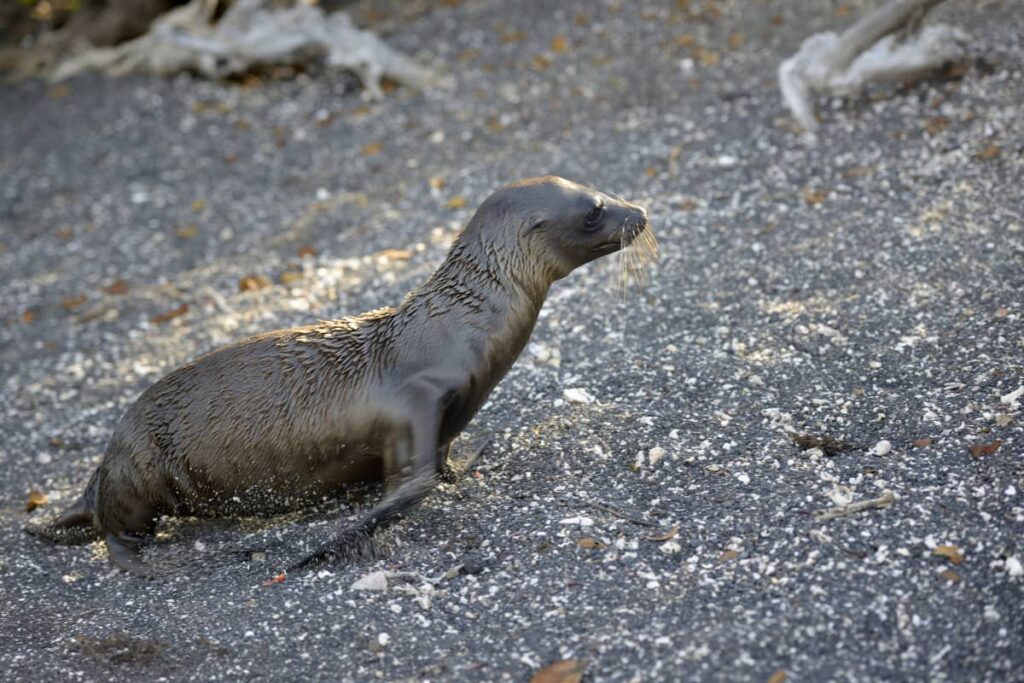
Animal Encounters
Mammals
- Galapagos Sea Lions (Zalophus wollebaeki): Playful pups will nibble your snorkel fins.
- Orcas (Orcinus orca): Transient pods hunt sea lions near Bolivar Channel (July–October).
- Bryde’s Whales (Balaenoptera edeni): Spot their 12-meter bodies breaching off the west coast.
- Bottlenose Dolphins (Tursiops truncatus): Ride bow waves alongside your Zodiac.
- Galapagos Fur Seals (Arctocephalus galapagoensis): Rare and nocturnal, hiding in sea caves.
Reptiles
- Marine Iguanas (Amblyrhynchus cristatus): Males turn blood-red during mating season.
- Lava Lizards (Microlophus albemarlensis): Dart across rocks, flashing yellow dewlaps.
- Pacific Green Turtles (Chelonia mydas): Nest on hidden beaches (January–June).
- Land Iguanas (Conolophus subcristatus): Reintroduced in 2019 after rat eradication.
- Sea Snakes (Pelamis platura): Yellow-bellied serpents hunting in tidal pools.
Birds
- Flightless Cormorants (Phalacrocorax harrisi): Watch males present seaweed gifts to mates.
- Galapagos Penguins (Spheniscus mendiculus): The only penguins north of the equator.
- Galapagos Hawks (Buteo galapagoensis): Apex predators with a 120 cm wingspan.
- Waved Albatross (Phoebastria irrorata): Soar on 2.5-meter wingspans (April–December).
- Blue-Footed Boobies (Sula nebouxii): Dive-bomb fish with comical precision.
Fish & Underwater Life
- Scalloped Hammerheads (Sphyrna lewini): School in groups of 200+
- Mola Mola (Mola mola): Sunfish the size of compact cars.
- Manta Rays (Mobula birostris): Wingspans up to 7 meters.
- Parrotfish (Scarus spp.): Grind coral into Fernandina’s famous white sand.
- Whale Sharks (Rhincodon typus): Gentle giants migrating June–November.
Travel Tips and Practical Information
- Permits: All visitors need a Galapagos National Park permit ($200 for most visitors; read more about it here), arranged by tour operators.
- Packing: Bring closed-toe hiking shoes, a UV-protective shirt, and a waterproof dry bag.
- Health: No vaccines required, but mosquito borne illness is a risk—use reef safe repellent.
- Wildlife Rules: Stay 2 meters from animals; never block their path.
- Best Time: June–November for hiking; December–May for snorkeling.
Wrapping Up
Fernandina Island is a primal showcase of the Galapagos’ untamed spirit - a pristine volcanic wilderness where lava flows sculpt new landscapes and endemic species like marine iguanas (Amblyrhynchus cristatus) and flightless cormorants (Phalacrocorax harrisi) defy evolutionary norms. As one of UNESCO’s most fiercely protected sites, visiting Fernandina isn’t just a trip; it’s a rare privilege to witness Earth’s raw creativity.

